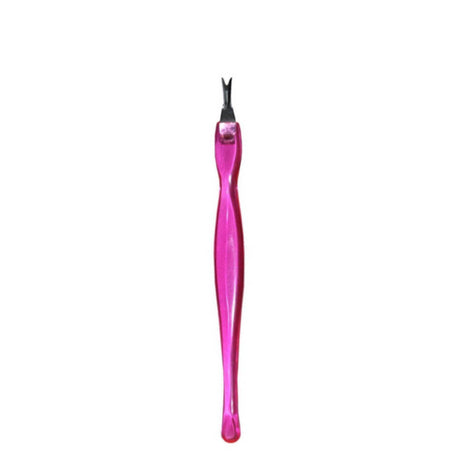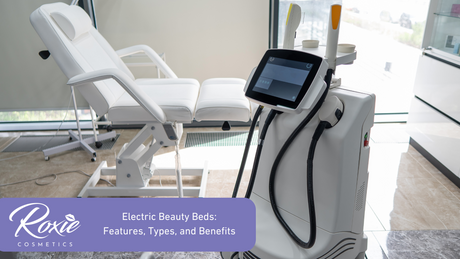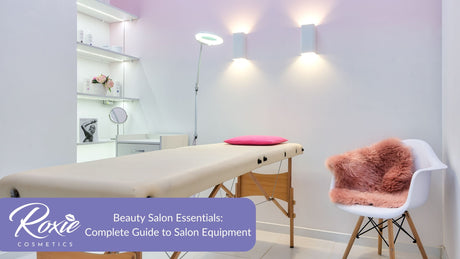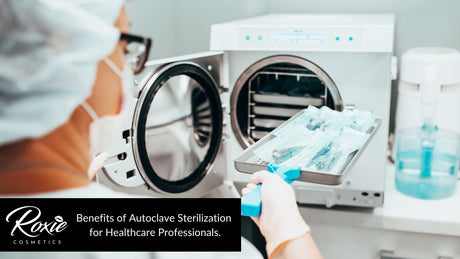A makeup primer is a cream, liquid, or gel that is used to produce a smooth base for makeup. Just like the foundation, it comes in a range of finishes, dewy, satin, or matte, that helps to fill up pores, absorb excess oil, and balance out skin texture, so the foundation goes on smoother, looks more natural and lasts much longer. Some makeup primers provide light coverage for minor skin blemishes, while others provide extra skincare benefits such as hydration, anti-ageing, and UV protection to improve the skin over time. Makeup primer helps glide and gives the ideal look that lasts for a longer period of time. It also gives the complexion of a radiant appearance and improves the skin texture, providing additional benefits throughout the makeup application.
Listed below are the different types of makeup primers.
- Eyelid or Eyeshadow Primer: The eyelid or eyeshadow primer prevents eyeshadow from creasing. Eyelid primers will help eye makeup slide on smoothly and stay fierce all day.
- Eyelash Primer: Eyelash primer both lengthens and stimulates lash growth. It also provides a good foundation for mascara to adhere to, allowing it to last longer.
- Lip primer: Lip primer ensures your lipstick will go on smoothly—and stay on.
- Hydrating primer: This type of primer, which is formulated with hydrating elements, moisturizes dry skin and keeps primer from flaking off.
- Pore-minimizing or mattifying primer: Mattifying primers, which are ideal for oily skin and wide pores, contain silicon or other substances to decrease the appearance of pores and prevent skin from creating excess oil, which can ruin makeup around the T-zone.
- Illuminating primer: Illuminating primers act as a highlighter for the entire face. It can provide a natural-looking glow and make the foundation look more natural.
- Colour-correcting primer: Colour-correcting primers are coloured to neutralize hues that are opposite each other on the colour wheel and reduce discolouration. Choose a green primer to offset redness or a yellow primer to reduce dark circles.
- Blur primer: Blur primers use light-reflecting pigment to create a soft-focus appearance for a photo finish.
- Silicon Primer: Silicon primer creates a smooth, canvas-like texture when applied to the skin. It is an alternative to water-based primers, which help makeup last longer.
- Tinted Primer: Tinted primer comes in liquid or gel form with a hint of colour. It is used to provide sheer coverage on the skin, concealing fine lines and wrinkles on the face.
- Cream-based Primer: This primer's texture will be creamy, and it will function flawlessly to provide superior coverage and blend nicely while providing that one shade with better pigmentation than coloured ones.

1. Do your skincare.
Cleansing and moisturising should be the first steps in any skincare routine and before applying makeup. Cleansing and moisturising will eliminate all dirt, oil, and impurities from the skin's surface. Applying sunscreen afterward will help to smooth the skin even more and guarantee that the makeup glides on smoothly and stays in place throughout the day. Applying makeup to a face that hasn't been adequately primed is a bad idea. Skipping a skincare routine before wearing makeup may result in uneven, patchy skin covering that fades off far too quickly. Preparing the skin before applying makeup is important since it will not only make the skin smoother for the application of foundation, but also helps the makeup last much longer than usual.
2. Apply a small amount of primer to your face using your fingers or makeup sponge to avoid the eyes.
Apply a little amount of primer with fingers or a makeup sponge in a light, equal layer before applying makeup, avoiding the eye area. However, using a sponge absorbs less prime than using a hand. It also pushes the primer into the open pores, giving makeup a perfect finish, and decreasing the appearance of blemishes by delivering an extra layer of moisture to the skin. Applying primer is important because it functions as a protective barrier, preventing the moisturiser and skin oil balance from mixing with the makeup. It will manage the oil quotient on the skin, allowing makeup to look better and last longer.
3. Apply a small amount of eye primer for your eye makeup.
Apply a tiny amount of eye makeup primer on a flat eyeshadow brush or fingertips after applying daily eye creams and facial moisturiser. The coating should be thin and quickly absorbed into the skin so that it can smooth out the area and prepare it for shadowing. A primer for the eyes is important because it improves the texture of the skin, allowing eye makeup to go on smoother and last longer. Furthermore, eyelid primer keeps eye shadow in place and keeps it from creasing.
4. Wait for the primer to set in before putting your foundation.
Allow the primer to properly set for at least 60 seconds before applying the foundation to help prevent patchiness. It is important to use a primer before applying the foundation to reduce the likelihood of breakouts or long-term makeup side effects. It coats the skin and protects it from the damage caused by harsh cosmetic products.
What is the best makeup primer?
Good makeup begins with good skin, but it also goes without saying that good makeup begins with the best primer makeups. The best primer for dry skin is one that is water-based and contains hyaluronic acid, vitamins B and C, and squalene. A water-based primer is lightweight and moisturising, providing the ideal basis for dry skin by concealing uneven patches and pores and ensuring that makeup stays in place all day. For sensitive and oily skin, the best makeup primer is a silicone-based primer. The silicone-based primer evens out the skin's surface and forms a barrier that prevents the skin from penetrating.
What is a primer used for?
Primer is mostly used to smooth out the skin, giving it a more polished and even appearance. Primer is essential to users as it blurs blemishes, minimises the pore appearance to get a beautiful final skin look, and most importantly protects the skin by acting as a barrier that helps makeup last longer. The majority of primers are non-comedogenic, which means they will not irritate or damage the face. Makeup primers will also not clog the pores, which is how acne begins. Even if users have acne, primers will help to lessen its appearance. Some primers have anti-ageing benefits because they smooth out fine lines and wrinkles, giving consumers a more youthful glow with makeup.
What is the difference between makeup with primer and without primer?
Many beauty editors and makeup artists have commended the benefits of a primer, but many women are still hesitant whether to use it. The difference between makeup with primer and makeup without primer is that primer creates a smoother surface for foundation, more evenly distributes makeup with a longer-lasting impact, and enhances the appearance of the skin. Applying makeup without primer is not always harmful to the skin. However, this is entirely subjective and dependent on preference and how the skin reacts to cosmetics. Applying makeup without primer provides only light coverage and does not conceal blemishes or discolouration.



















